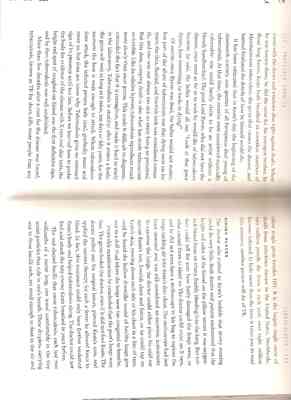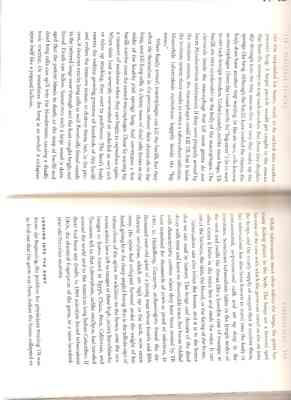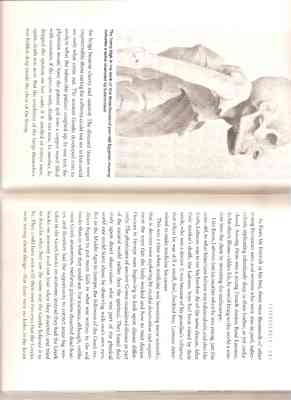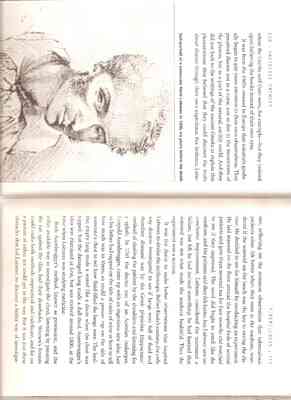Pages
1
Youth grows pale, and spectre-thin, and dies..." The poet who wrote these words, John Keats, was only twenty-four when he first coughed up blood. When Keats came home feverish one night, the friend he was staying with urged him to go to bed at once. No sooner did he lie down than he gave a hacking cough that brought with it the unmistakable taste of blood. The candle he lit confirmed his expectations: it revealed a bright red spot on his pillow. "That drop of blood is my death-warrant," Keats said calmly to his friend; "I mist die." Frightened, his friend ran out into the cold February night for a doctor in the first of many attempts to save young Keats over the next year. But all attempts were useless. Tuberculosis germs could have been hdiing in Keats's lungs since childhood; by the time the disease revealed itself, leaving its red signature on his pillow, the battle was already lost.
Keats knew this all too well: as a boy of fourteen, he had cared for his mother when she lay dying tuberculosis. He allowed no one else to cook her meals, and sat with her through the night in a
"Cover your mouth when you cough!" admonished a tuberculosis control brochure distributed in Germany, in the early twentieth century.
2
112: INVISIBLE ENEMIES room with the doors and windows shut tight against drafts. When he was twenty-three, he did the same for his youngest brother. In those long hours, Keats both breathed in countless numbers of Mycobacterium tuberculosis, the germ that causes the disease, nad learned firsthand the details of how he himself would die. It has been estimated that in Keat's day, the beginning of the nineteenth century, one quarter of all Europeans died young of tuberculosis. At that time, the creative were considered especially vulnerable: one could hardly claim to be an artist without a bloody handkerchief. The poet Lord Byron, who did not have the disease, once went so far as to wish he could die of tuberculosis because, he said, the ladies would all say, "Look at that poor Byron, how interesting he looks in dying!" Of course, once Byron was dead, the ladies would not matter, but part of the allure of tuberculosis was that dying went on for years: the thin, flushed, and feverish look was considered roman-tic, and one was not always too sick to enjoy being so perceived. But this slow, creeping death is also what has made tuberculosis so terrible. Like its relative leprosy, tuberculosis reproduces much more slowly than most germs. This made it difficult to diagnose, concealed the fact that it is contagious, and made it hard to study in the laboratory. Tuberculosis is stealthy: after it enters a body, the germ will wait as long as it takes, ten days or fifty years, for the moment the host is weak enough to attack. When tuberculosis does attack, the infected person feels tired, gradually more and more so, but does not know why. Tuberculosis gives no outward sign of its presence until too late. before we learned how to probe the body for evidence of the disease with X rays and skin tests, the bright red spot of coughed-up blood was the first definitive sign, and by then tuberculosis was well established. More than five decades after a cure for the disease was found, tuberculosis, known as TB for short, kills more people than any other single germ besides HIV. It is the largest single cause of death from infectious disease in the United States. Worldwide, two million people die from it each year; over eight million become infected. In little more than the time it takes you to read this sentence, another person will die of TB. HIDING PLACES The doctor who rushed to Keat's bedside that snowy evening could do very little. Both doctor and patient understood that the bright red color of blood on the pillow meant it was oxygen-rich blood from an artery, freshly bleeding into the lung. But nei-ther could tell for sure how badly damaged the lungs were, or what caused them to bleed so. The doctor could order no X rays, and he did not even have a stethoscope in his bag to explore the lungs sucking air into Keat's thin chest. The stethoscope had just been invented and was still considered and eccentric instrument. To examine the lungs, the doctor could either place his cold ear against Keat's hot, feverish chest and listen, or he could tap on Keat's skin, moving down each side of his chest in a line of taps, until he heared the hollow drumlke sound of healthy lungs give way to a dull thud where the lungs were too congested to breathe. From this examination he concluded that the poet's lungs were fine. The germ fooled the doctor, even it it did not fool Keats. The doctor pulled out his surgical lancet, pierce Keat's arm, and applied the current therapy for such a fever: he allowed Keats to bleed. In fact, this treatment could only have further weakened Keats's body and helped tuberculosis along. The doctor could not find and attack the tiny enemy Keats breathed in years before. The rod-shaped bacilli that cause tuberculois, each just two millionths of a meter long, can travel comfortably in the tiny moist particles that ride in one's breath. These droplets, carrying one to three bacilli each, are small enough to float in the air and
3
can stay suspended for hours, ready to be sucked into another person's lung. A larger particle would get caught in the mucus that lines the airways to trap such invaders. But these tiny droplets slip through into the tiny mucus-free air sacs that make up the sponge-like lung. Although the bacilli have evaded the mucus, the body does have another trap waiting. In the air sacs, cells known as macrophages (from the Greek words for "big eater") lie in wait to eat such foreign invaders. Unfortunately, unlike most bugs, TB bacilli are very comfortable in the belly of the macrophages. The chemicals inside the macrophage that kill most germs do not harm Mycobacterium tuberculosis. If they were properly armed by the immune system, the macrophages could kill TB, but it takes the immune system, three weeks to notice a tuberculosis infection. Meanwhile tuberculosis reproduces happily inside the "big eaters". When finally armed, macrophages can kill the bacilli, but they often die themselves in the process, release their chemicals in the lung, and kill lung cells. A cheesy mass of dead cells forms in the midst of the healthy pink spongy lung. And sometimes a few bacilli survive even the armed macrophages. These lie waiting for a moment of weakness wehn they can begin to reproduce again. When their host is severely overworked or underfed or very sick or takes up smoking, they start to proliferate. The host's body resents the sudden growing presence of hundreds of tiny bacilli and orders the immune system to destroy them, but, in the process, it destroys nearby lung cells as well. Eventually blood vessels in the tattered lungs wear through and the host coughs bright red blood. Death can follow. Sometimes such a large vessel is damaged that the patient bleeds to death, or the soup of bacilli and dead lung cells can spill into the bloodstream, causing deadly toxic reaction. Or sometimes the lung is so eroded it collapses upon itself like a popped balloon. While tuberculosis most often infects the lungs, the germ has many hiding places in the body. The lungs are a favored spot because of the ease with which the germ can travel on the air into the lungs, and the steady supply of oxygen that it receives there, but tuberculosis has alos been known to travel into the body in contaminated, unpasteurized milk and set up shop in the intestines. Sometimes tuberculosis hides in the lymph nodes of the neck and swells the throat like a horrible case of mumps; at other times it hides in the voice box and steals the voice. It an infect the kidneys, the skin, the blood, or the lining of the brain. Tuberculosis can also infect the bones, and it is in the bones that we can read its history. The lungs and throats of the dead decay with time and leave no discernible trace, but bones riddled with characteristic cavities whre they have been eroded by TB have remained for thousands of years as proof of infection. In 1907, in Heidelberg, Germany, archaeologists found the six-thousand-year old spine of a young man whose fourth and fifth thoracic vertebrae, which are high up in the back, were eaten away. His spine had collapsed forward under the weight of his head, giving him the sharp-angled hump that is the telltale sign of tuberculosis of the spine. In addition to the bones, over the centuries artists have left us images of these high, pointy hunchbacks. Images or bones found in Egypt, China, Peru, California, and Tennessee tell us that tuberculosis, unlike smallpox, had traveled around the world and to the Americas long before Columbus. If there had been any doubt, in 1994 scientists found tuberculosis DNA, the chemical fingerprint of the germ, in a nine-hundred-year-old Peruvian mummy.
4
The hump high in the back of this three-thousand year old Egyptian mummy indicates a spine crumpled by tuberculosis. the lungs became cheesy and tattered. The diseased tissues were impenterable; those caring for sufferers coudl not see in but could see only what came out. The ancient Greeks developed tests to analyze what the tubercular patient coughed up. In one test, the physician would have the patient spit into a copper vessel filled with seawater; if the sputum sank, death was near. In another, he dripped the sputum on hot coals; if it smelle of rotten meat, again, death was near. But the condition of the lungs themselves was hidden deep inside the chest of the living. As Keats lay feverish in his bed, there were thousands of other young European men and women who were also in peril, tuberculosis replicating relentlessly deep in their bodies, and yet undisclosed. Among them was a young French doctor, Rene Laennec. In his short, illness-ridden life, he would bring to the world a window into the chest by inventing the stethocope. Like Keats, Laennec lost his mother when he was young, just five years old, to what historians believe was tuberculosis; and also like Keats, Laennec was to see his brother die of the same disease. After their mother's death, the Laennec boys had been raised by their uncle, who was a doctor. It was because of his guardian's influence that when he was still a small, frail, freckled boy, Laennec determined to make medicine his career. This was a time when medicine was becoming more scientific; that is, doctors were exploring by careful observation and experiment the ways that the body worked and how to treat disease. Doctors in Europe were beginning to look upon disease differently. The physicians of ancient Greece considered disease as part of the natural world rather than the spiritual. They based their study upon direct observation: what was part of the physical world one could learn about by observing with one's own eyes. But in the Middle Ages in Europe, the followers of the Greek tradition began to put more faith in what was written in the old books than in what they could see. For instance, although, unlike most Greek anatomists, medieval physicians dissected dead bodies, and therefore had the opportunity to correct some big mistakes in the Greek books on anatomy, instead they had the Greek books on anatomy read out loud when they dissected, and tried to describe what they saw the same way the Greeks believed it to be. They could have seen with their own two eyes that the Greeks were wrong about things - that there were no holes in the heart
5
where the Greeks said there were, for example - but they insisted upon believing the books instead of their own eyes. It was from the 1600s onward in Europe that scientists gradually began to pay more attention to their own observations. They perceived disease not as a curse, nor as due to the movements of the planets, but as part of the natural, earthly world. And they did not look to the writings of the ancient Greeks to explain this phenomenon: they believed that they could discover the truth about disease through their own experience. For instance, Laennec, reflecting on the common observation that tuberculosis patients often felt better when they were at the seashore, wondered if the seaweed on the beach was the key to curing the disease. He decided to see for himself by conducting an experiment. He laid seaweed on the floor around the hospital beds for several patients and gave them seaweed tea for four months and watched to see if they improved. teh ward did begin to smell like the seashore, and the patients said they felt better, but Laennec saw no conclusive improvement. Laennec considered the treatment a failure, but felt he had learned something: he had learned that seaweed was not what made the seashore healthful. Thus the experiment was a success. Self-portrait of a tubercular Rene Laennec in 1820, six years before his death. It was the desire to make better observations that inspired Laennec to devise the stethoscope. Before Keats's century, the only way doctors investigated to see if lungs were full of fluid and therefore diseased was by the Greek physician Hippocrates' method of shaking the patient by the shoulders and listening for a splash. In 1761 the doctor son of an Austrian innkeeper, Leopold Auenbrugger, came up with an ingenious new idea. Just as his father had rapped on the side of casks of wine or beer to tell how much was in them, so could a person rap on the side of someone's chest to tell how fluid-filled the lungs were. The healthy, empty lung made a sound like a drum when the chest was tapped, but the damaged lung made a dull thud. Auenbrugger's idea was dismissed at first, but was revived around 1800, at the time when Laennec was studying medicine. Both Auenbrugger's method, known as percussion, and the other available way to investigate the chest, listening by pressing the ear against the skin, had their drawbacks. Women's breasts could make both methods impractical and indelicate, and fat on a patient of either sex could get in the way. But it was just these obstacles that led Laennec to discover a better way to investigate.




